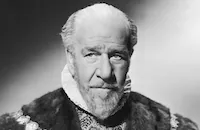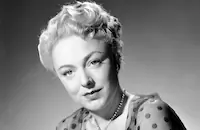Little Lord Fauntleroy

Brief Synopsis
Cast & Crew
John Cromwell
Freddie Bartholomew
Dolores Costello Barrymore
C. Aubrey Smith
Guy Kibbee
Henry Stephenson
Film Details
Technical Specs

Synopsis
In Brooklyn in the 1880s, after Captain Errol, an Englishman, dies, his American widow and son Ceddie live frugally, but are happily devoted to each other. When Ceddie turns nine, his miserly grandfather, the Earl of Dorincourt, who had earlier denounced his son for marrying an American, calls Ceddie to England to take the title Lord Fauntleroy, the earl's successor. Ceddie's best friend, grocer Mr. Hobbs, believes all aristocracy are pretentious and unkind. Ceddie, therefore, is reluctant to accept his new title. However, when Havisham, the earl's lawyer and envoy, gives Ceddie money that enables him to help those most dear to him, he believes the earl is filled with generosity. When Ceddie and his mother, whom he calls "Dearest," arrive in Erlesboror, he learns that his mother will not be living with him at the castle. Dearest, not wanting Ceddie to think ill of his grandfather, does not tell him it is the earl's bigotry that forces them to live apart. The handsome and well-mannered Ceddie treats the earl with a candor and sweetness that soon softens the old man's heart, causing his family and tenants to think kindly of him for the first time. Trouble starts when Minna, a fortune-hunting woman who claims to have married the earl's eldest son, comes forward to claim Ceddie's title for her own ill-mannered boy, Tom. When the court barrister regretfully names Tom Lord Fauntleroy, Ceddie swears his devotion to his grandfather, with or without his title. Broken-hearted, the earl decides Minna's actions are retribution for his cruelty to Dearest and apologizes. Meanwhile, in Brooklyn, bootblack Dick, Hobbs' and Ceddie's friend, reads about Minna's claim and recognizes her as his actress sister-in-law. Soon Hobbs, Dick and Dick's brother Ben are in England, where Ben identifies Minna as his wife and is reunited with his missing son. On Ceddie's tenth birthday, Dearest comes to live at the castle, and Hobbs, changing his mind about earls, says he has come to England to stay.

Director

John Cromwell
Cast

Freddie Bartholomew

Dolores Costello Barrymore

C. Aubrey Smith

Guy Kibbee

Henry Stephenson

Mickey Rooney

Constance Collier

E. E. Clive

Una O'connor
Jackie Searl

Jessie Ralph

Ivan Simpson
Helen Flint
Eric Alden
May Beatty

Virginia Field
Reginald Barlow
Lionel Belmore
Tempe Pigott

Gilbert Emery

Lawrence Grant

Walter Kingsford

Eily Malyon
Fred Walton
Robert E. O'connor
Elsa Buchanan
Joseph Tozer
Alex Pollard
Daisy Belmore
"prince"
Lillian Irene
Dave Dunbar
Jack Cameron

Joan Standing
Montague Shaw
Agnes Steele

Mary Mclaren
Renee Sheering
Dan Maxwell
Mary Gordon
Cecil Elliott
Marjorie Plecher
J. P. Mcgowan
Alec Craig
Barlow Borland
George Atkinson

Dickie Jones
William Ingersoll
Eddie Bernard
Tommy Bupp
Mickey Rentschler
Georgie Billings
Leonard Kibrick
Donald Haines
Dewey Bender
Buster Slavin
Billy Dooley
Walter Lawrence
Lorimer Johnson
Harold Entwistle
Barbara Denny
Edith Kingdon
Peter Shaw
Tom Ricketts
Arthur Blake
Lionel Pape
Robert Bolder
Anthony Kemble Cooper
Crew
Major G. O. T. Bagley
Sturges Carne
Jack Cosgrove
Art Keenan
Barbara Keon
Hal C. Kern
Corynn Kiehl
William Law
Bert Mayer
Virgil Miller
Casey Roberts
Charles Rosher
Robert Ross
Edd Russell
Phil L. Ryan
David O. Selznick
Ray Sperry
Eric Stacey
Max Steiner
Robert Stillman
Henry Stone
Stuart Thompson
Sophie Wachner
Jack Wagner
Hugh Walpole
Marian Webb
Earl A. Wolcott

Videos
Movie Clip




Film Details
Technical Specs

Articles
Little Lord Fauntleroy (1936)
When producer David O. Selznick decided to leave MGM to form his independent production company in 1935, he bought the rights to the novel from Pickford, surprising many in Hollywood with his choice of such old-fashioned material for Selznick International's debut film. Playwright and screenwriter Ben Hecht sent Selznick a telegram, saying "the trouble with you, David, is that you did all your reading before you were twelve." There was method to Selznick's madness; he did have a fondness for Victorian literature, but he had also had a big hit at MGM with David Copperfield (1935).
Hoping to replicate that film's success, Selznick borrowed Freddie Bartholomew, the child star of Copperfield, from MGM to play Ceddie in Little Lord Fauntleroy (1936). It was a wise choice. Bartholomew's sincerity made what could have been the character's cloying goodness seem genuine and appealing. Even before production began, Selznick's publicity team took on the "sissy" stereotype of character, asking the public through newspaper polls whether Ceddie should wear the shoulder-length curls. Apparently, the answer was no. Bartholomew has short hair in the film, and does not wear lace collars. Also helping cut the treacle was young Mickey Rooney, on loan from MGM, in a supporting role as Ceddie's Brooklyn pal, a shoeshine boy. MGM would exploit the unlikely chemistry between the two boys in three subsequent films, The Devil Is a Sissy (1936), Captains Courageous (1937), and Lord Jeff (1938). By the time they appeared together in A Yank at Eton (1942), Rooney's stardom had eclipsed Bartholomew's.
Playing Ceddie's mother in Little Lord Fauntleroy was one of the first actresses signed to a contract with Selznick International, Dolores Costello. The serenely lovely Costello had been a star of the silent screen when she appeared with John Barrymore in The Sea Beast (1926). The two fell in love and married two years later, and Costello soon retired from the screen to raise their two children. However, Barrymore's alcoholism destroyed the marriage, and they divorced in 1935. Little Lord Fauntleroy marked her return to the screen after her divorce. She was billed as "Dolores Costello Barrymore."
To direct the film, Selznick's agent brother Myron suggested one of his clients, John Cromwell, who was just finishing up a contract at RKO, where he had directed a well-received adaptation of Of Human Bondage (1934), starring Bette Davis and Leslie Howard. Selznick had also worked at RKO, and Cromwell liked and admired him. He also liked Selznick's approach to Little Lord Fauntleroy. "It appeared to me that the story was so old-fashioned and dated that it could be dangerous material," Cromwell later recalled. "[Selznick] tried to translate what was good in the original story into something acceptable for modern audiences."
Selznick, Cromwell and their cast succeeded in attracting modern audiences. Little Lord Fauntleroy opened in April of 1936 at Radio City Music Hall, to such enthusiastic reviews and large crowds that police had to be called in for crowd control. In his biography of Selznick, film historian David Thomson writes that Little Lord Fauntleroy is "a shameless monster of sentimentality....It might turn your stomach--if you weren't having such a good time. Little Lord Fauntleroy is an unblushing fantasy, made with skill and cunning. That the film was such a hit shows that David Selznick was not the only American who dreamed of being carried back to olde England and the nobility." With Little Lord Fauntleroy, Selznick proved the doubters wrong, and started off his new company with the kind of success that gave it instant credibility.
Producer: David O. Selznick
Director: John Cromwell
Screenplay: Hugh Walpole; Frances Hodgson Burnett (novel) Cinematography: Charles Rosher
Art Direction: Sturges Carne
Music: Max Steiner
Film Editing: Hal C. Kern
Cast: Freddie Bartholomew (Cedric 'Ceddie' Erroll), Dolores Costello Barrymore ('Dearest' Erroll), C. Aubrey Smith (Earl of Dorincourt), Guy Kibbee (Mr. Silas Hobbs), Henry Stephenson (Havisham), Mickey Rooney (Dick Tipton), Constance Collier (Lady Constanzia Lorridale), E.E. Clive(Sir Harry Lorridale), Una O'Connor (Mary), Jackie Searl (Tom Tipton).
BW-102m.
by Margarita Landazuri

Little Lord Fauntleroy (1936)
Quotes
Are you the Earl? I'm your grandson, you know, that Mr. Havisham brought. I'm Lord Fauntleroy.- Cedric 'Ceddie' Erroll
You don't wear your crown all the time?- Cedric 'Ceddie' Erroll
No, it does not become me.- Earl of Dorincourt
Mr. Hobbs said you always wore it, but after he thought it over, he said he supposed you must sometimes take it off to put your hat on.- Cedric 'Ceddie' Erroll
Yes, I take it off occasionally.- Earl of Dorincourt
Come here, Lord Fauntleroy and tell me why you look at me so.- Miss Herbert
I was thinking how beautiful you are.- Cedric 'Ceddie' Erroll
If any one had told me I could be fond of a child, I should not have believed them. I always detested children -- my own more than the rest. I am fond of this one and he is fond of me. I am not popular; I never was. But he is fond of me. He was never afraid of me -- he always trusted me. He would have filled my place better than I have filled it. I know that. He would have been an honor to the name.- Earl of Dorincourt
Trivia
Notes
On 6 December 1935, Daily Variety reported that the film company was leaving for location shooting in Calabasas, CA; however, the exact day production began is unclear. This was the first film that David Selznick made after he left M-G-M and formed his new production company, Selznick International. On December 17, 1935, Hollywood Reporter reported that Lillian Irene, who played the part of Bridget, the maid, would receive a screen credit, even though she completed her part in one's day's shooting, because her character is referred to many times by other players. She did not appear in the credits on the viewed print, but is listed in the Call Bureau Cast Service records for this film. According to Hollywood Reporter, invitations to a "swank" preview of this film at Grauman's Chinese Theatre on February 20, 1936 were in the name of Selznick International's board of directors: Dr. A. H. Giannini, Robert Lehman, David O. Selznick, C. V. Whitney and Lloyd Wright. Dolores Costello Barrymore made a personal appearance at a special premiere at Foundation Hospital in Warm Springs, GA, where young patients were the guests of honor; Freddie Bartholomew was also expected to make an appearance, but it is unclear whether or not he attended. The film opened in Philadelphia on March 5, 1936. An ad in Film Daily on 6 March quotes thirteen men "from the world of sport and industry...who are known for their courage and daring," including Jack Dempsey, on their impressions of the character of Lord Fauntleroy following the preview. An ad in Motion Picture Daily on April 10, 1936 projected a week of $100,000 in box-office sales at New York's Radio City Music Hall. Film Daily reported on May 22, 1936 that schools in Providence, RI were urging students to attend the film. Earlier versions of Little Lord Fauntleroy include the 1914 British film directed by F. Martin Thornton and starring Gerald Royston, Jane Wells and H. Agar Lyons, and the 1921 Mary Pickford-United Artists film directed by Alfred E. Green and Jack Pickford and starring Mary Pickford and Claude Gillingwater.

Miscellaneous Notes
Released in United States 1936
Released in United States on Video April 14, 1988
Released in United States 1936
Released in United States on Video April 14, 1988













